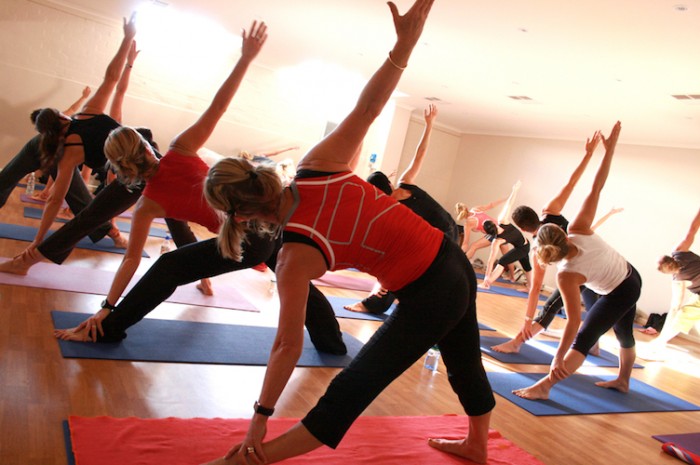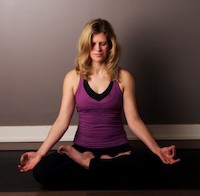Whenever you read a yoga teacher’s bio, it usually includes the word “alignment.”
Everyone is passionate about alignment, and I was certainly the same. By describing that we know our alignment as yoga teachers, we sound like we can keep our students safe: knee over ankle; a straight line from hip to armpit. The phrases spin out of us like silky strands of a spiderweb. We’ve got this.
As I took more trainings and even began my own teacher training, I started to look beyond the yoga journals and into scientific journals. I wanted to see if there was a thread that held it all together. Knee over ankle sure sounds good, but why are we all bringing our students in that direction?
Then I looked at the biomechanics of walking up stairs. The knee had to go over the toe. We weren’t retraining ourselves to walk up stairs. Fencers place their knee over toe to lunge forward. It can involve more muscles. Was Warrior II just aesthetic rather than safe?
I came to realize that I had been teaching my yoga poses for aesthetic reasons. My teacher Bernie Clark suggested that a yoga teacher has to have an intention behind every pose. If you are cueing your students to go into Warrior II and suggesting that that darn knee just stays over the pesky ankle, ask yourself, “why?” You may be working with beginners and want to stay safe. You may be working on quad strength before you transition into chair. But if we are just doing it because it has been done before, then we aren’t practicing what we preach when it comes to mindfulness principles.
Human variation is incredibly obvious on the outside. You likely don’t look like any of your family members, let alone your friends. Yet we expect our students to be able to do the same things with their bodies. Paul Grilley has said, “ignorance of skeletal variations is the biggest problem in yoga today.” Our bones are different. Our muscles are different. Our organs are different. Yet some teachers proclaim, “eventually everyone’s head will be on the ground in Prasarita Padottanasana.” Femurs, pelvis, hamstrings and Achilles tendons are different for everyone in the class. There is no “eventually.” There is now.
This isn’t to say that I plan to throw my hands up and let my students do whatever the heck they want. If something looks a little strange to me, I ask them if it feels okay. And even if the knee is pointing in a direction mine wouldn’t, if they feel nothing in the knee and comfortable in their body, then it might be their perfect alignment. Teaching like this requires lots of questions. It requires you to look into what you would like to accomplish energetically rather than physically.
With the media fluctuating between the messages of “celebrate your body” and “change your body,” it can be hard not to fall into one box. Yet if we always focus on alignment, we are in some way asking our students to change their bodies. Asking questions and teaching mindfully is not simple, but what is simple about the human body? Everyone is different. Everyone is beautiful.
~
Author: Courtney Sunday
Editor: Caroline Beaton
Photo: Elephant Archives
Ready to join?
Hey, thanks so much for reading! Elephant offers 1 article every month for free.
If you want more, grab a subscription for unlimited reads for $5/year (normally, it's $108/year, and the discount ends soon).
And clearly you appreciate mindfulness with a sense of humor and integrity! Why not join the Elephant community, become an Elephriend?
Your investment will help Elephant Journal invest in our editors and writers who promote your values to create the change you want to see in your world!
Already have an account? Log in.
Ready to join?
Hey, thanks so much for reading! Elephant offers 1 article every month for free.
If you want more, grab a subscription for unlimited reads for $5/year (normally, it's $108/year, and the discount ends soon).
And clearly you appreciate mindfulness with a sense of humor and integrity! Why not join the Elephant community, become an Elephriend?
Your investment will help Elephant Journal invest in our editors and writers who promote your values to create the change you want to see in your world!
Already have an account? Log in.
 Share on bsky
Share on bsky


Read 3 comments and reply